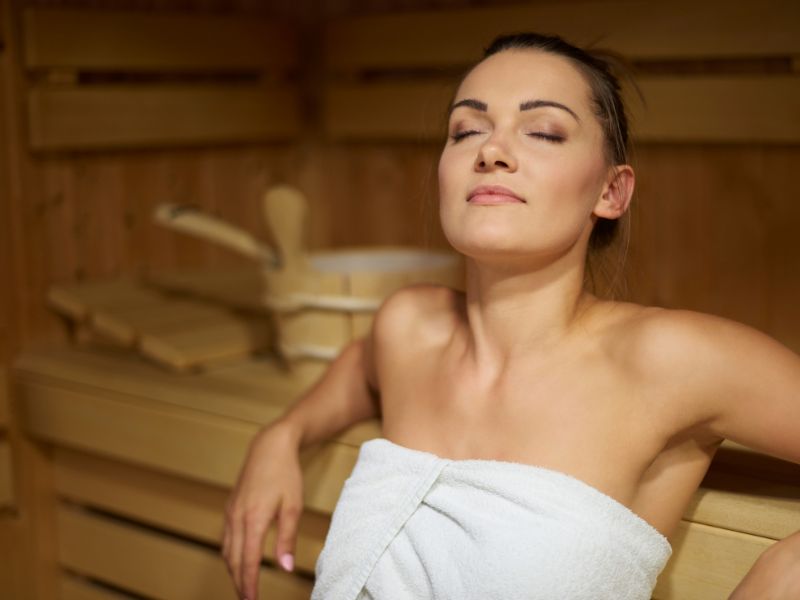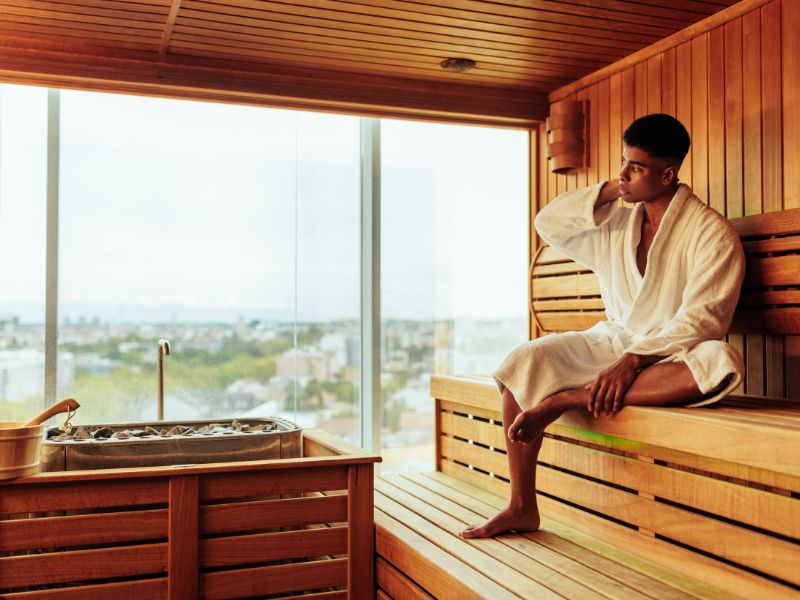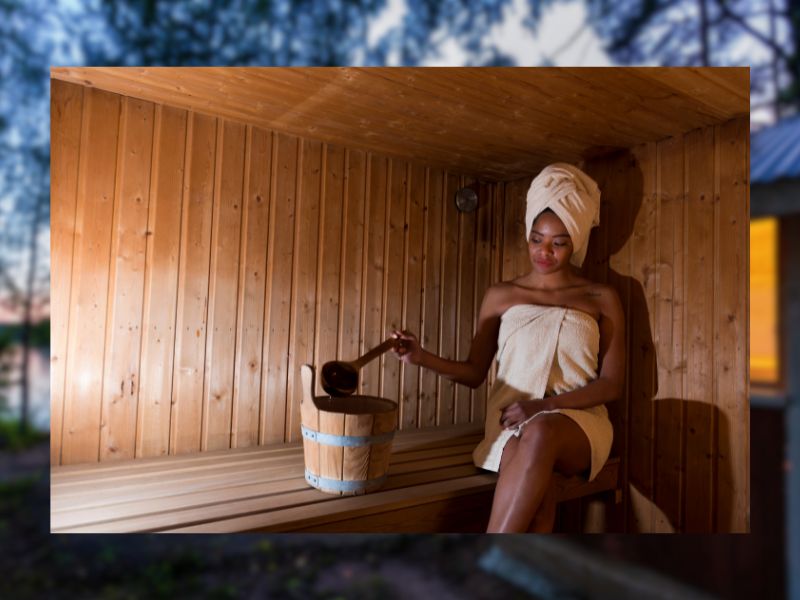Is there a “best” time to enjoy a sauna? While saunas can be enjoyed at any time of the year, there are some differences in how we can approach sauna use in winter and summer.
In this blog post, we’ll explore the benefits of saunas and discuss the best times to go in the sauna, as well as the differences between sauna use in winter and summer.
Sauna Benefits
Saunas are popular worldwide with the health benefits and the relaxing experience they provide. Whether you’re a sauna enthusiast or a newcomer, understanding the differences in taking saunas during winter and summer can enhance your overall sauna experience.
We enjoy saunas for a variety of reasons. Some people find that saunas help them to relax and reduce stress, while others go for their health benefits (e.g. improved circulation, reduced pain and inflammation). Also, as we recommend, you can enjoy saunas to bring social connections and provide an opportunity to socialize and connect with family and friends.
Key takeaways:
- During the winter, having a session in an outdoor sauna can be an excellent way to warm up after freezing in the cold.
- In the summer, taking a dip in an outdoor sauna or having a good ol’ Finnish sauna can stop you from turning into a tomato after being in the scorching heat.
Sauna Use in the Winter

Saunas can provide numerous benefits, especially during the winter. Of course, the heat of the sauna can help combat the cold weather, but aside from that, sauna use can provide a variety of health benefits:
Boosting immunity
Saunas can help boost the immune system by increasing circulation and producing more white blood cells. This can be especially helpful during the winter months when cold and flu season is at its peak.
Relieving seasonal affective disorder (SAD)
Seasonal affective disorder (SAD) is a type of depression that occurs during the winter months when there is less sunlight. Saunas can help relieve the symptoms of SAD by providing a warm and relaxing environment that can improve mood and reduce stress levels.
Relieving muscle tension and soreness
Winter activities such as skiing, snowboarding, and ice skating can be hard on the muscles. Saunas can help relieve muscle tension and soreness by promoting circulation and reducing inflammation.
Improving skin health
The dry heat of the sauna can help improve skin health during the winter months when cold and dry air can cause the skin to become dry and itchy.
Preparing to Use a Sauna in Winter
To make the most of your winter sauna experience, consider incorporating sauna rituals such as:
- stretching light exercises to warm up your muscles before taking a sauna.
- Take the time to cool down gradually after your sauna session.
- Moisturize your skin to prevent dryness caused by the winter air
Sauna in the Summer

It may look counterintuitive to take a sauna during the summer, but saunas still can be enjoyable and provide health benefits during this season.
Helps with Hot Weather
Saunas can help your body acclimate to the hot weather, inducing sweating and increasing blood flow. This can then help you regulate body temperature and improve cardiovascular health.
The important aspect of taking the sauna in summer is that one activates the thermoregulation mechanisms in your body that would otherwise be not activated.
For example, on a hot day, some people may struggle to cool down but after the use of a sauna, the human body’s cooling ability increases, and cooling becomes more natural and more efficient. So overall one may not feel as hot on a hot day after a sauna.
Perfect for Post Outdoor Activities
Going to the sauna after outdoor summer activities such as hiking, swimming, or playing sports can also be particularly beneficial. This is because the heat of the sauna can help relax muscles and reduce tension, which can be helpful after physical exertion.
Additionally, saunas can help with skin health by cleansing the pores and removing dirt and sweat, which can help prevent skin irritation and breakouts.
As always, use the sauna safely and with caution:
- Keep hydrated before, during, and after sauna sessions
- Limit the amount of time spent in the sauna to avoid overheating.
Precautions and Considerations
It’s important to consider any underlying health conditions before taking saunas, especially in extreme weather conditions. People with cardiovascular issues or heat sensitivity should consult with a healthcare professional to determine the suitability of saunas and adjust their sauna sessions accordingly.
Beyond the Seasons: Year-round Sauna Benefits

While winter and summer saunas offer specific advantages, it’s important to remember that the benefits of saunas still extend throughout the year. Regular sauna use can enhance circulation, promote relaxation, relieve muscle tension, and provide a calming escape from everyday stress, regardless of the season.
Using the saunas all year round as your wellness routine allows you to enjoy its long-term benefits. Whether it’s a cold winter night or a scorching summer day, the sauna can be your sanctuary, providing a rejuvenating and restorative experience for both the mind and body.
When is the Best Time to go to the Sauna?
For seasoned sauna users, the best time to go to the sauna will always depend on individual preferences and schedules, no matter the season. Some people find that going in the morning can help them start the day feeling refreshed and energized, while others prefer to go in the evening to wind down after a long day.
Sauna in the Morning

The time of day to use a sauna can impact its effectiveness. Going to the sauna in the morning can help start the day feeling refreshed and energized. Sauna use in the morning can also provide a boost to the immune system, which can be particularly beneficial during the cold and flu season. We get into more details about using the sauna in the morning below.
Advantages of Saunas in the Morning
Increased energy and productivity: Starting the day with a sauna can help boost energy levels and increase productivity throughout the day. The heat and humidity from the sauna can help stimulate circulation and promote oxygenation, which can result in increased mental clarity and focus.
Improved immune system: Going to the sauna in the morning can help strengthen the immune system, helping to prevent colds and other illnesses. This is due to the increase in white blood cell production that can occur as a result of sauna use.
Improved skin complexion: Sauna use in the morning can help improve skin complexion by promoting blood flow and oxygenation to the skin, resulting in a brighter, healthier-looking complexion.
Sauna in the Evening

On the other hand, taking a sauna at night can be an excellent way to wind down after a long day. You can take advantage of the relaxation benefits of saunas during the evening, as they can help you sleep better and reduce stress levels before bedtime.
Furthermore, taking a sauna in the evening can be an effective way to promote muscle recovery and repair if you’ve just finished working out.
Advantages of Saunas in the evening:
Improved sleep quality: Going to the sauna in the evening can be an effective way to promote relaxation and improve sleep quality. The heat and humidity from the sauna can help relax muscles and reduce tension, making it easier to fall asleep and stay asleep throughout the night.
Better muscle recovery: Sauna use in the evening can help promote muscle recovery and repair after a workout, thanks to the increase in blood flow and oxygenation that can occur.
Stress relief: Going to the sauna in the evening can also provide stress relief after a long day. The calming and relaxing effects of the sauna can help reduce stress levels and promote overall well-being.
Which is Better: Sauna in the Morning, at Night, or Both?
Again, the best way to determine is to work around your schedule and your preference on which benefits to reap. You could try out either and see what works for your body. If your schedule allows you, can you take both? Yes, but take note of some precautions.
Precautions in using your Sauna
Please consider that it is recommended to take sauna sessions for about 15-20 minutes per day. If you plan on using your sauna more than once, keep each session shorter, i.e. make your sauna for about 10 minutes each for two sessions.
Also, to ensure a safe and enjoyable sauna experience, it’s important to be properly hydrated before and after each session. Adequate hydration will prevent potential side effects such as fatigue, headaches, and muscle pains.
Wrapping Up
Overall, Saunas deliver benefits whether you enjoy them in the winter, during the summer, or all year round. Whether you seek warmth and relief from the cold or a refreshing escape from the summer heat, saunas can be a valuable addition to your wellness routine. If you’re looking to explore the world of saunas and experience their wonders firsthand, check out and learn more with us at Shym Saunas!



